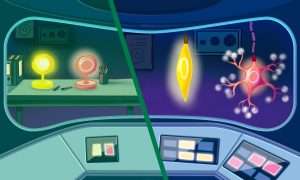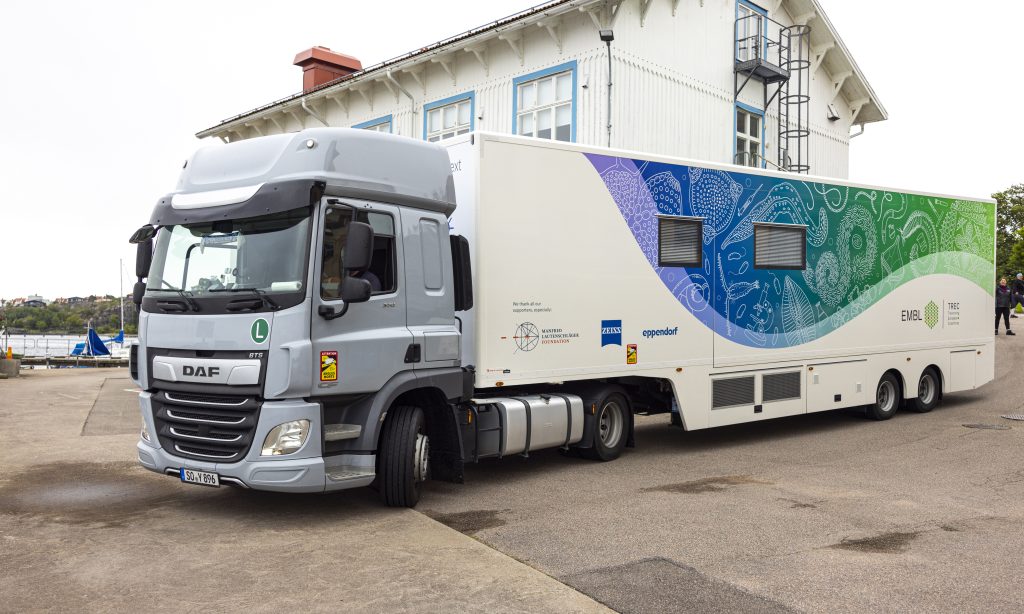Read the latest Issue
One-touch make-up – for our cells
Novel system for efficient multi-labelling of mammalian cells
The cells in the different parts of this video are always the same (grey), but, like actors using make-up to highlight different facial features, they have fluorescent labels that mark different cellular components in different colours: blue shows the nucleus, yellow shows tubulin (a component of the cell’s scaffolding), red shows mitochondria, cyan shows the membranes of vesicles called endosomes, and purple shows other membrane structures. Instead of spending hours applying first one colour of make-up – or fluorescent label – and then another, scientists were able to create the equivalent of a make-up brush that is applied only once and highlights different features simultaneously.
The underlying technique was first developed by Imre Berger from the European Molecular Biology Laboratory (EMBL) in Grenoble, France, as part of a method called MultiBac, for expressing protein complexes in insect cells. In work published today in Nature Communications, Imre Berger and Philipp Berger from the Paul Scherrer Institut (PSI) in Villigen, Switzerland, joined forces to adapt this technology concept to mammalian cells like our own for the first time. It essentially involves rapidly engineering a single vector to deliver a theoretically unlimited number of foreign genes to a cell. To date, the scientists have successfully delivered up to 15 genes in this way. The protein encoded by each of those genes can carry a fluorescent label, so this makes multiple labelling much more efficient than previous methods. The new labelling technique for mammalian cells, called MultiLabel, could help make drug development and screening considerably faster, since it allows scientists to precisely label many cellular components involved in a given disease process and follow them all at the same time.
Imre Berger’s work is supported by the EC FP7 project P-CUBE, which provides access to state-of-the-art technology platforms at EMBL in Grenoble, Heidelberg and Hamburg.
PSI Press Release on this work (In German)







